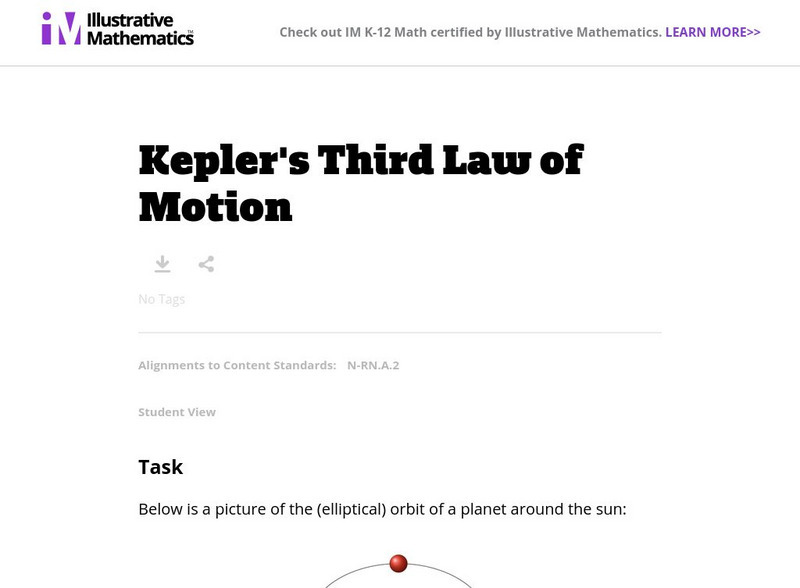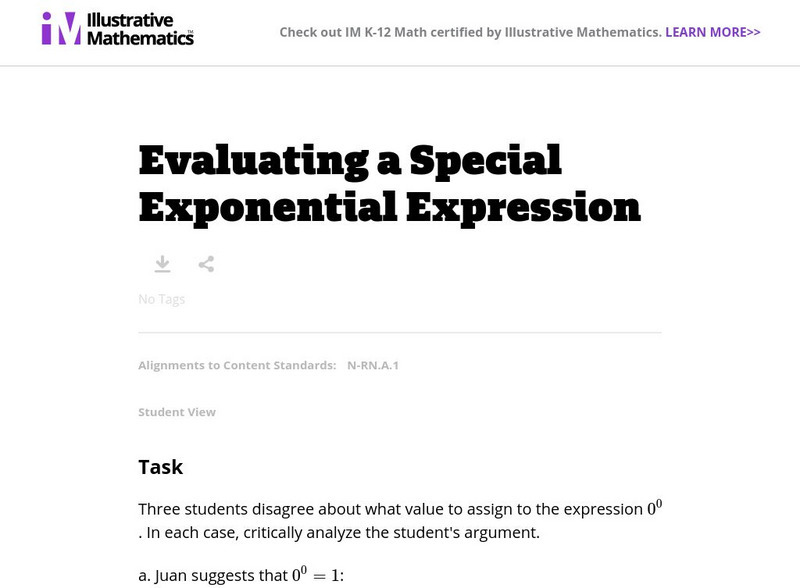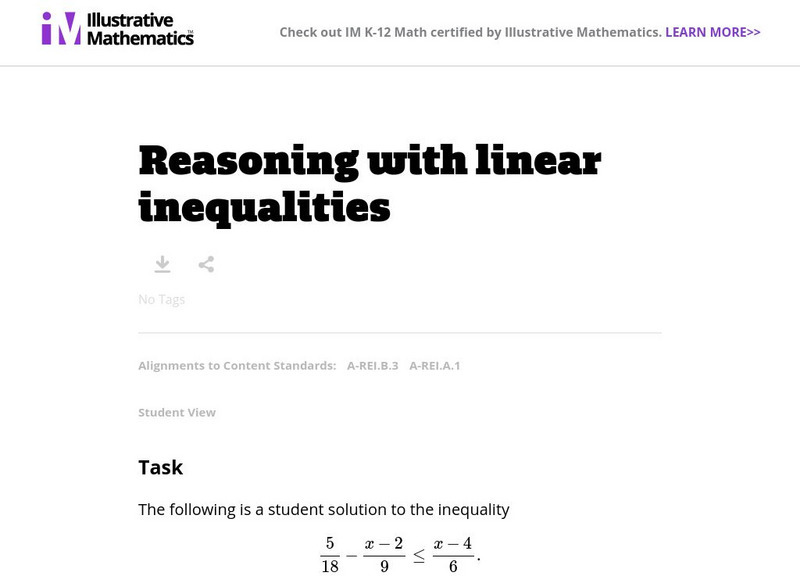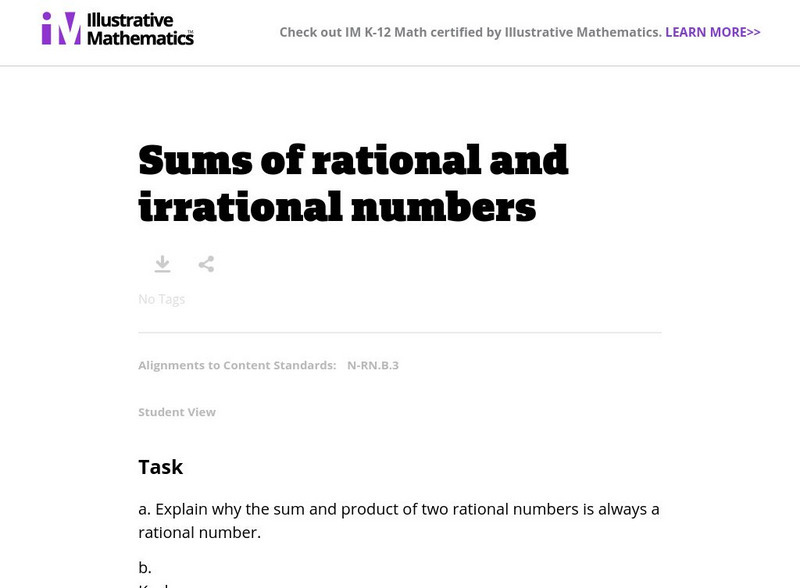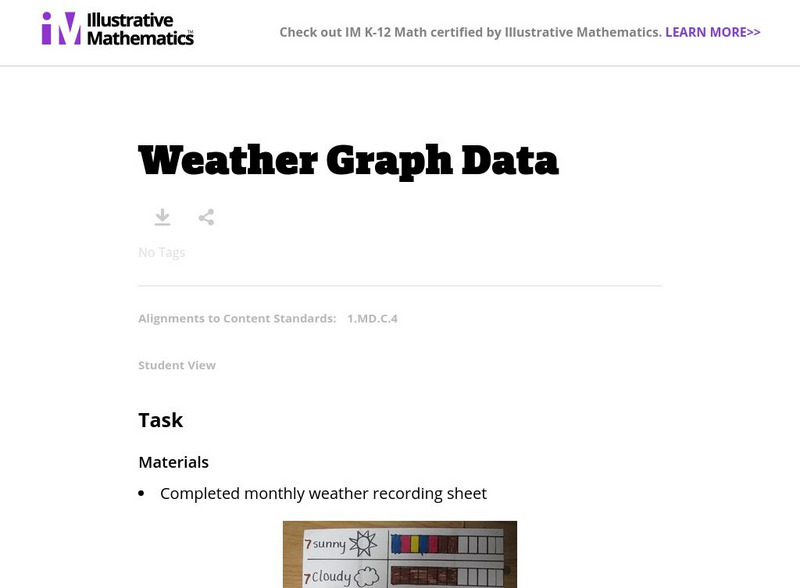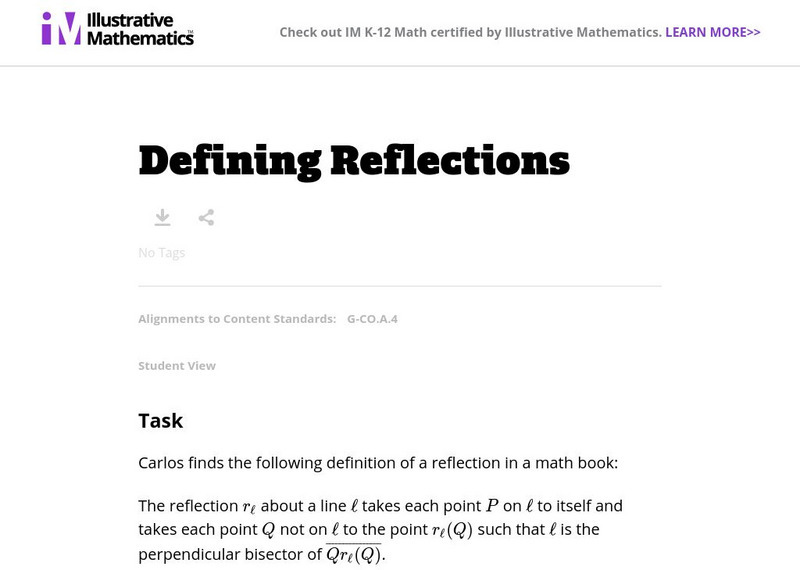Better Lesson
Better Lesson: Using Models to Add and Subtract
Common Core standards encourage the use of models to build understanding in math. This lesson shows sometimes reluctant 2nd graders that models are helpful tools in solving mathematical problems.
Better Lesson
Better Lesson: Time and Money
As the result of a Unit assessment, it was found that students showed some confusion with writing time and with adding sets of coins. These skills need to be reviewed to aid in mastery of the Common Core standards for time and money.
Better Lesson
Better Lesson: Moving Along in Hundreds
The Common Core standard is that students understand that the numbers 100, 200, etc. represent so many groups of 100.
Homeschool Math
Homeschool Math: Fraction Multiplication and Area
This fifth-grade lesson explores the area of a rectangle with fractional side lengths. We tile the rectangle with unit rectangles and show that the area is the same as would be found by multiplying the side lengths. We multiply...
Other
Conversions for Weight Measurements
This site allows you to convert weight/mass measurements. For example converting tons to grams. CCSS.Math.Content.3.MD.A.2 Measure and estimate liquid volumes and masses of objects using standard units
Illustrative Mathematics
Illustrative Mathematics: N rn.a.2: Kepler's Third Law of Motion
The purpose of this task is to solve some expressions requiring fractional exponents in the modeling context of planetary motion. Aligns with N-RN.A.2.
Illustrative Mathematics
Illustrative Mathematics: N rn.a.1: Evaluating a Special Exponential Expression
The purpose of this task is to study the rules of exponents in the context of trying to make sense of a challenging mathematical expression. Teachers will critically analyze each student's argument. Aligns with N-RN.A.1.
Illustrative Mathematics
Illustrative Mathematics: A Rei Reasoning With Linear Inequalities
Young scholars are presented with a solution to an inequality and are asked to find two mathematical errors and explain why they are incorrect. Aligns with A-REI.B.3 and A-REI.A.1.
Illustrative Mathematics
Illustrative Mathematics: 6.ns Multiplication, Division and Place Value, Part 1
Sixth graders are presented with a completed multiplication equation and are asked to use it to find the answers to seven other equations. To do this, they must use their reasoning and estimation skills. Aligns with 6.NS.B.3.
Illustrative Mathematics
Illustrative Mathematics: N Rn Sums of Rational and Irrational Numbers
The goal of this task is to examine sums and products of rational and irrational numbers. One important property of rational numbers is that their decimals always terminate or repeat: using a slightly different formulation, a rational...
Illustrative Mathematics
Illustrative Mathematics: a.apr Combined Fuel Efficiency
The purpose of this problem is to rewrite simple rational expressions in different forms to exhibit different aspects of the expression, in the context of a relevant real-world context, in this case, the fuel efficiency of a car. A-APR.D.6.
Illustrative Mathematics
Illustrative Mathematics: A Rei Pythagorean Triples
This task has two separate goals: the first is to solve a pair of equations, one quadratic and the other linear. The second goal is to observe that a point that lies on a circle gives rise to a Pythagorean triple. Aligns with A-REI.C.7.
Illustrative Mathematics
Illustrative Mathematics: Weather Graph Data
The purpose of this task is for students to represent and interpret weather data, as well as answer questions about the data they have recorded. Student worksheets and recording sheet are included.
Illustrative Mathematics
Illustrative Mathematics: 7.rp Proportionality
This lesson plan explores how to recognize and represent proportional relationships between quantities.
Illustrative Mathematics
Illustrative Mathematics: G Mg Hexagonal Pattern of Beehives
Beehives are made of walls, each of the same size, enclosing small hexagonal cells where honey and pollen are stored and bees are raised. This problem examines some of the mathematical advantages of the hexagonal tiling in a beehive....
Illustrative Mathematics
Illustrative Mathematics: G Mg Toilet Roll
Picture a roll of toilet paper; assume that the paper in the roll is very tightly rolled. Assuming that the paper in the roll is very thin, find a relationship between the thickness of the paper, the inner and outer radii of the roll,...
Illustrative Mathematics
Illustrative Mathematics: G Mg How Many Cells Are in the Human Body?
About how many cells are in the human body? The purpose of this task is for students to apply the concepts of mass, volume, and density in a real-world context. Aligns with G-MG.A.2.
Illustrative Mathematics
Illustrative Mathematics: G Co Construction of Perpendicular Bisector
A and B are two distinct points in the plane and line AB is the segment joining them. The goal of this problem is to construct the perpendicular bisector of segment AB. Aligns with G-CO.D.12.
Illustrative Mathematics
Illustrative Mathematics: G Co Dilations and Distances
The goal of this task is to study the impact of dilations on distances between points. Aligns with G-CO.A.2.
Illustrative Mathematics
Illustrative Mathematics: G Co Fixed Points of Rigid Motions
A rigid motion of the plane is a map of the plane to itself which preserves distances between points. The purpose of this task is to use fixed points as a tool for studying and classifying rigid motions of the plane, i.e., translations,...
Illustrative Mathematics
Illustrative Mathematics: G Co Defining Reflections
The goal of this task is to compare and contrast the visual intuition we have of reflections with their technical mathematical definition. Aligns with G-CO.A.4.
Illustrative Mathematics
Illustrative Mathematics: G Co Defining Rotations
The goal of this task is to encourage students to be precise in their use of language when making mathematical definitions. After working on this problem, they are asked to give a proper definition of a rotation by an angle about a...
Illustrative Mathematics
Illustrative Mathematics: G Co Building a Tile Pattern by Reflecting Hexagons
This task applies reflections to a regular hexagon to construct a pattern of six hexagons enclosing a seventh. The focus of the task is on using the properties of reflections to deduce this seven-hexagon pattern. Aligns with G-CO.B.6.
Illustrative Mathematics
Illustrative Mathematics: G Co Classifying Triangles
The goal of this task is to help students synthesize their knowledge of triangles where only two of the vertices have been given. They will need to know that a triangle inscribed in a circle, with a diameter of the circle as one side, is...


